Fighter aircraft and air defense forces of Yemen before the start of the air campaign by the Arab Coalition in 2015
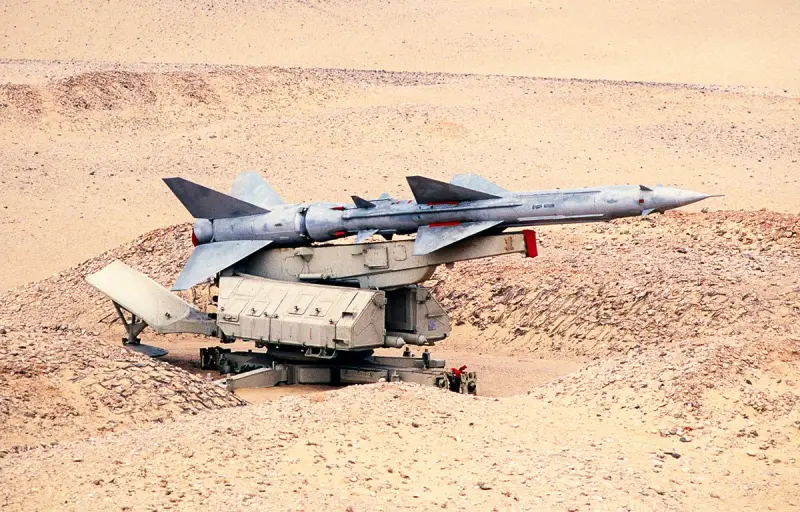
In February 2015, the forces of the “Arab Coalition”, consisting of military contingents and assets aviation support from Saudi Arabia, the United Emirates, Kuwait, Bahrain, Egypt, Morocco, Jordan and Sudan, intervened in the civil war in Yemen.
While repelling air attacks, Yemeni air defense systems shot down several F-15, F-16 and Tornado ADV fighters, AH-64, Bell 407, UH-60 and drones. As of today, more than 30 different aircraft have been hit or crashed over Yemen.
This publication is the first part of a review dedicated to the air defense systems available to the armed formations of the Yemeni Islamist movement Ansar Allah. To better understand the combat capabilities of air defense deployed over Houthi-controlled territory, let's take a quick look at Yemen's fighter aircraft, anti-aircraft missile forces, anti-aircraft artillery, and radar air control assets available as of 2015.
Yemen fighter aircraft
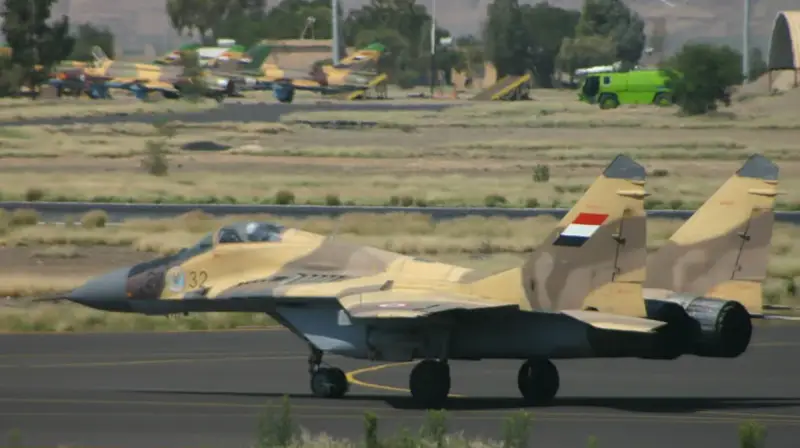
According to reference data, before the Saudi intervention, the Yemeni Air Force had about 70 American, Soviet and Russian-made combat aircraft: three dozen obsolete MiG-21bis and F-5E/F fighters, as well as approximately 20 MiG-29A/ UB and MiG-29SM, and about the same number of Su-22M3 fighter-bombers.
The bulk of Yemeni combat aircraft were located at Al-Dailami, Hodeidah and Al-Anad air bases. In total, Yemen had seven airfields with a hard runway where fighters could be based.
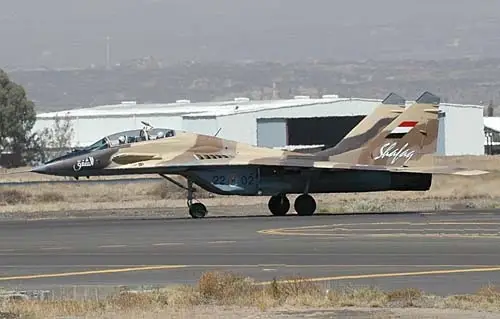
Two-seat MiG-29UB fighter of the Yemeni Air Force
The MiG-29 was of greatest value as interceptors and air superiority fighters. As of 2015, the age of the bulk of cars of this type did not exceed 10 years.
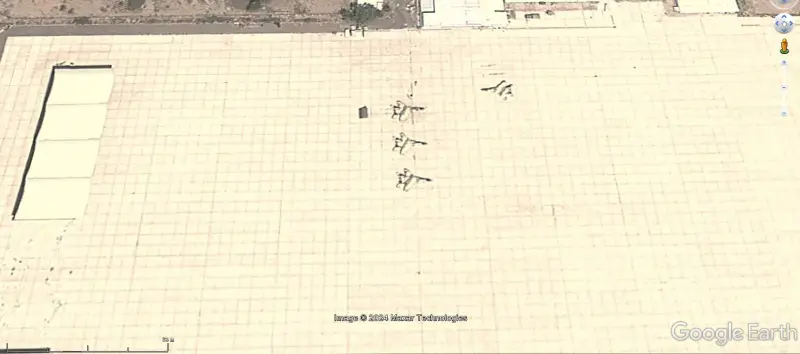
Google Earth satellite image: MiG-29 fighters in the parking lot of the Al-Dailami airbase, the image was taken in 2012
To intercept air targets, the MiG-29 could carry R-27 medium-range missiles; in close air combat, pilots mainly relied on the R-73 missile launcher with an infrared seeker. A number of media outlets claim that along with the modernized MiG-29SM, new R-77 missiles with an active radar seeker were supplied. However, it was not possible to find official confirmation of this in Russian sources.
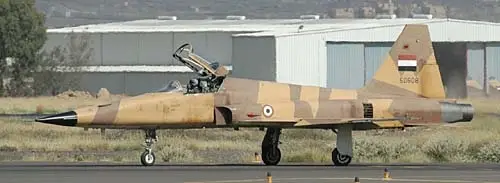
Yemeni Air Force F-5E fighter
The F-5E/F, MiG-21bis and Su-22M3 aircraft were built in the late 1970s and mid-1980s. Main weapons F-5E/F and MiG-21bis in the fight against air attack weapons were missiles with infrared seekers AIM-9L Sidewinder and R-60MK, which could be used against air targets from a distance of several kilometers.
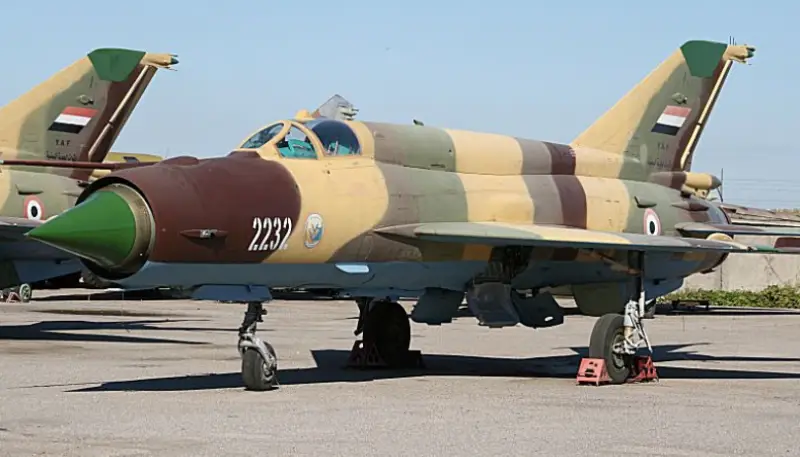
MiG-21bis Yemeni Air Force
The onboard radars of older American and Soviet-made fighters had limited capabilities, and targeting of air targets was mainly carried out by commands from ground-based radars.
Su-22M3 fighter-bombers, although they carried R-60MK close-in missiles, did not have radar and were mainly designed to perform strike missions.
During the civil war, Yemeni Air Force combat aircraft were repeatedly used to carry out airstrikes against Houthi forces. The MiG-29 and Su-22M3 also operated quite effectively against the Yemeni al-Qaeda cell.
After the capture of air bases by the Houthis, the combat effectiveness of the Yemeni Air Force has sharply decreased. Most pilots and technicians did not want to serve those they had recently fought against. The main part of the fighter aircraft was put into storage. A dozen and a half combat aircraft (mainly F-5E/F and MiG-29) were preserved in flying condition.
Despite the fact that the combat effectiveness of the Yemeni Air Force fighters in 2015 was very low, the Arab Coalition strike aircraft subjected Yemeni air bases to fierce bombing. Not only combat aircraft, but also passenger and military transport aircraft that were parked were subject to destruction. The Saudis bombed almost all hangars and large buildings at Yemeni airfields that were under the control of the Houthis.
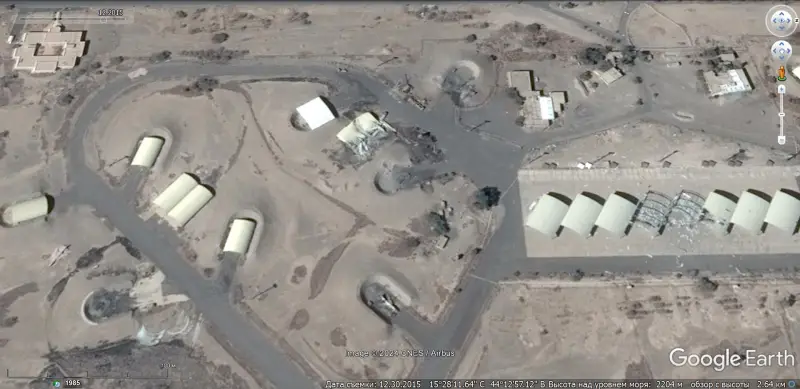
Google Earth satellite image: hangars and aircraft stands at the Al-Dailami airbase, destroyed as a result of airstrikes, the image was taken in 2015
However, several aircraft suitable for further use still survived. On September 24, 2023, at a military parade in Sanaa on the occasion of the 9th anniversary of the September 21 Revolution, the Houthis, together with Mi-17 helicopters, demonstrated the F-5E fighter in flight.
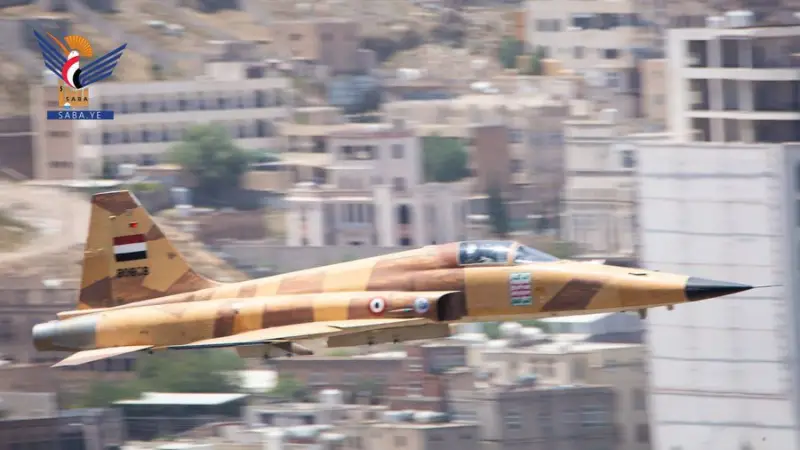
According to experts specializing in the field of combat aviation, this is now the only Yemeni fighter capable of taking off.
Ground-based Yemeni air defense forces and radar air control as of February 2015
In 2015, Yemen’s air defense had 9 separate brigades, one of them was radio engineering and was responsible for covering the air situation, and eight anti-aircraft missile brigades were armed with S-75M3, S-125M1A air defense systems, military self-propelled complexes “Kvadrat” and “Strela” -1", as well as anti-aircraft artillery installations.
From 1980 to 1987, South and North Yemen, which were then separate states, received 18 S-75M3 Volga air defense systems, as well as more than 600 B-755 and B-759 anti-aircraft missiles. In the mid-1970s, four SA-75M Dvina air defense systems and 136 B-750 missiles were delivered to South Yemen. But by 2015, there were no longer any SA-75M systems in service.
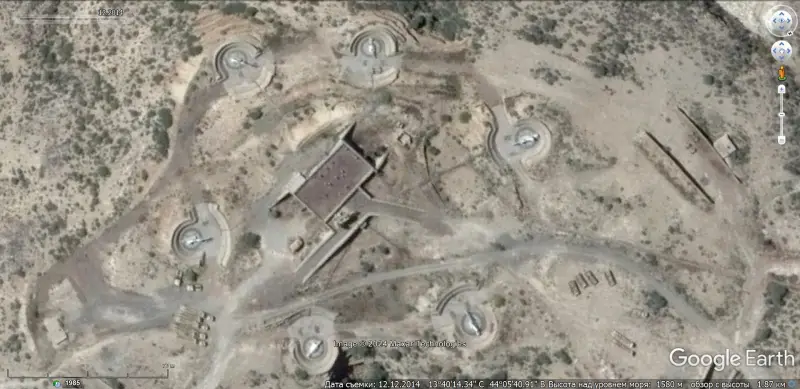
Google Earth satellite image: position of the S-75M3 air defense system in the vicinity of El Amaki, the image was taken in December 2014
As of 2014, 16 S-75M3 air defense systems were deployed in Yemen. Several more complexes of this type were in storage.
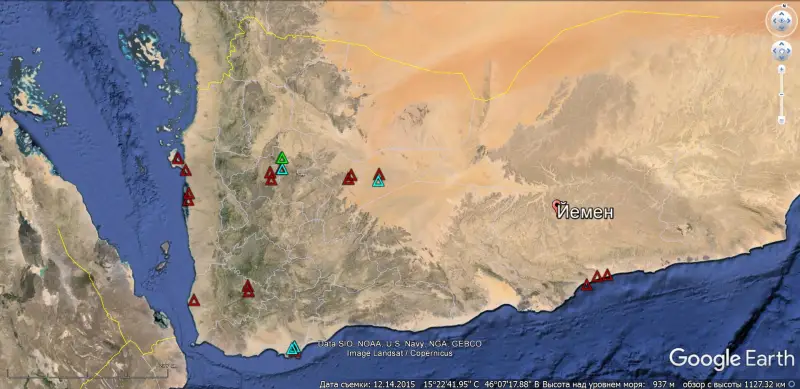
Bulky air defense systems, which included liquid-propelled missiles with a radio-command single-channel guidance system that was weakly protected from interference, were certainly outdated at that time, and today they are perceived as rarities of the Cold War.
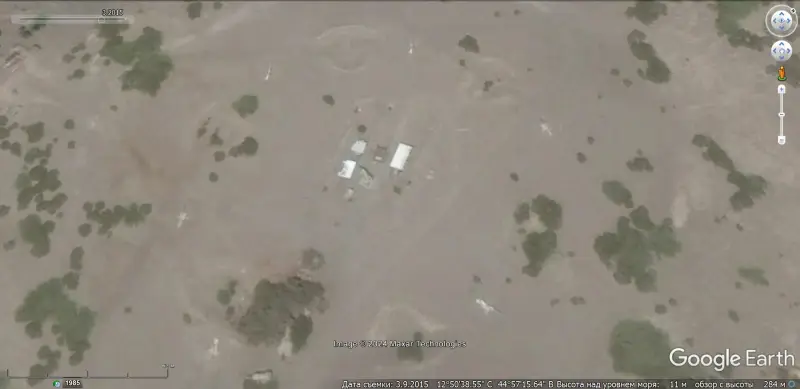
Google Earth satellite image: position of the S-75M3 air defense system in the vicinity of Aden, the image was taken in March 2015
After the Ansar Allah movement established control over a significant part of the country, the Houthis had seven anti-aircraft missile divisions at their disposal, the material of which was not in very good technical condition.
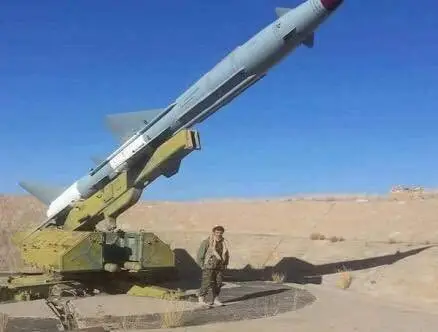
Soon after the start of the military operation by the Arab Coalition, all S-75M3 air defense systems were completely destroyed or put out of action. In turn, when repelling air strikes against air attack assets in 2015, approximately 40 anti-aircraft missiles were fired. Yemeni airborne forces, who went over to the side of the Houthis, stated that missile launches shot down two Saudi F-15SA fighters, two Emirati F-16Es and one Sudanese Su-24M front-line bomber. In fact, the Houthis’ successes were much more modest; they managed to hit several middle-class reconnaissance and attack drones.
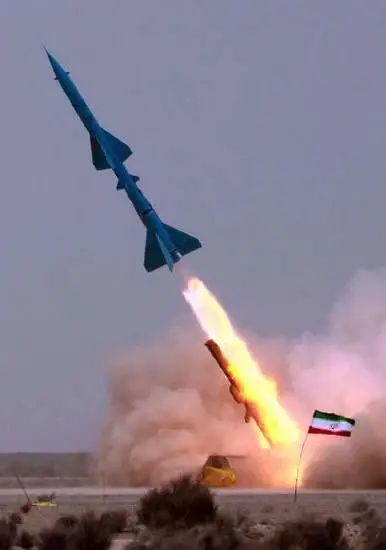
After the positions of low-mobile systems, clearly visible from the air, were carefully treated with attacks from cluster bombs and anti-radar missiles, the Houthis converted at least 60 missiles into Qaher-1, Qaher-2 and Qaher-2M operational-tactical missiles, which were launched at targets in Saudi Arabia Arabia.
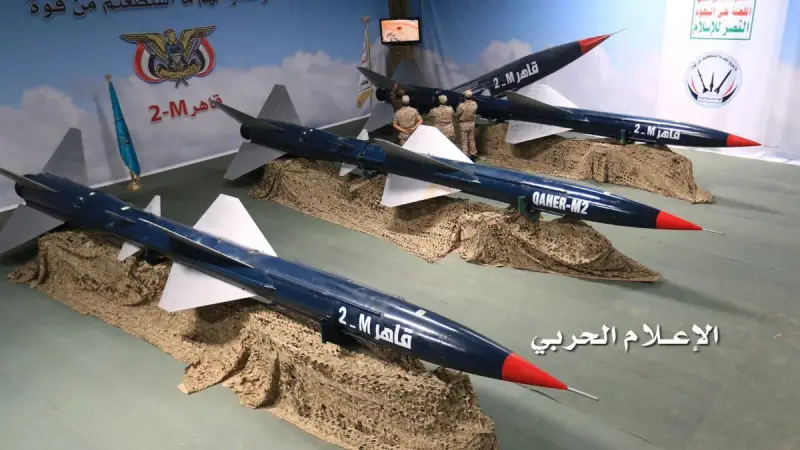
The declared firing range of the Qaher-M2 is 300 km. However, at such a distance, the dispersion of missiles with an inertial control system will be very significant, and it is possible that this OTR is equipped with a satellite navigation system.
Recently, the Houthis at the parade demonstrated the Mohit ballistic anti-ship missile, created on the basis of the B-755 or B-759 missile defense system, which at the final stage of the flight is induced by the heat emitted by the ship’s power plant.
In January 2017, the Yemeni military, who sided with Ansar Allah, announced that they had managed to return one S-75M3 anti-aircraft missile system to service.
In the 1980s, three S-125M1A Pechora low-altitude anti-aircraft systems and 250 V-601PD missiles were delivered to South and North Yemen. Before the start of the civil war, there were four S-125M1A air defense systems in service.
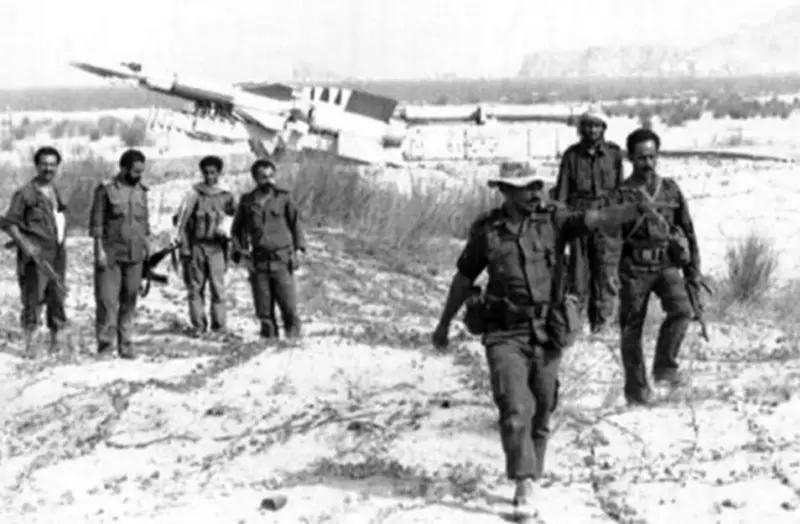
After the collapse of the Soviet Union, Yemen's air defense forces did not receive new on-site air defense systems, and the technical condition of the existing ones left much to be desired.
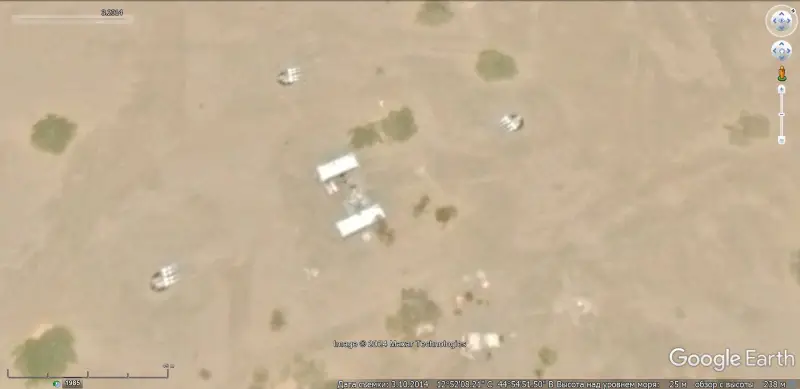
Google Earth satellite image: position of the S-125M1A air defense system in the vicinity of Aden
In 2012, a contract was signed with the Ukrainian state company Ukroboronservice for the overhaul of several remaining S-125M1A air defense systems. The extent to which this project was actually implemented remains unclear. There were reports that Ukraine had upgraded all Yemeni 2s to levels close to the Russian Pechora-XNUMXM, but no evidence of this has ever emerged.
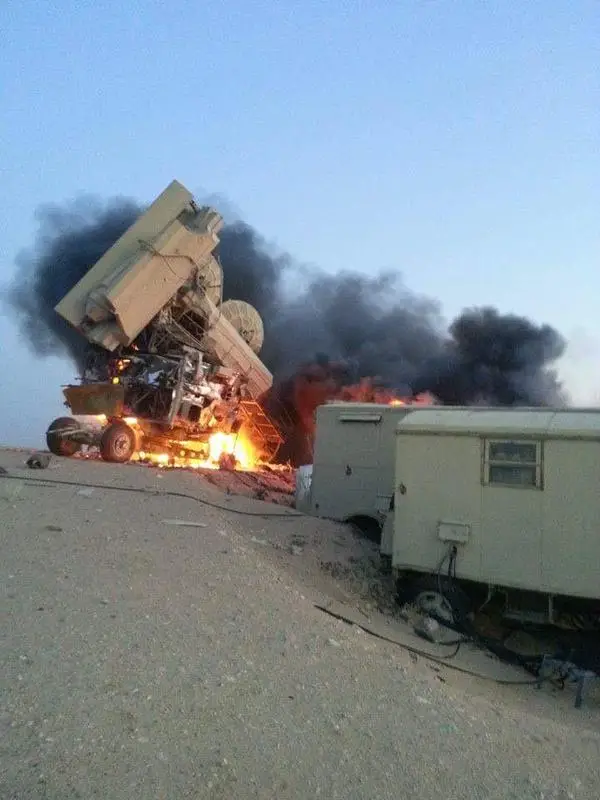
Burning guidance station SNR-125
Currently, there are no operational low-altitude S-125M1A systems in Yemen; almost all elements of low-altitude air defense systems were lost during combat operations.
In 1979, South Yemen received two batteries of Kvadrat mobile air defense systems (export version of the Kub air defense system) and four batteries of Strela-1 air defense systems.
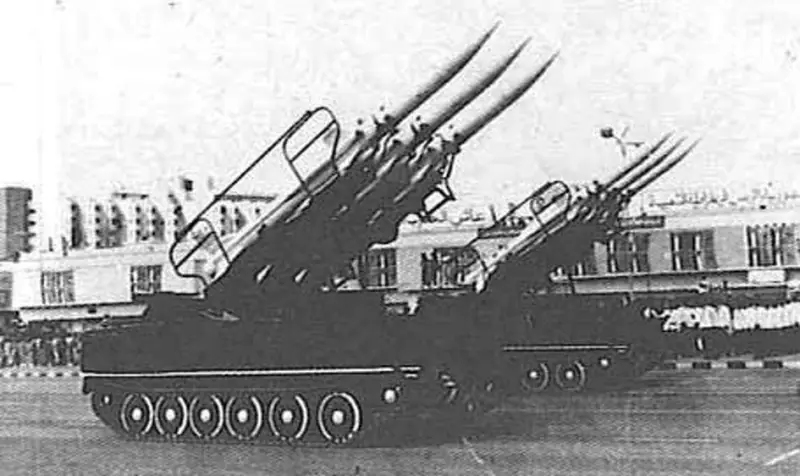
Self-propelled launchers of the Kvadrat air defense system at a parade in Aden in the early 1980s
At that time, the “Kvadrat” air defense system, which performed well during the Arab-Israeli war of 1973, was the best complex of its class exported to the USSR. Moreover, other countries at that time did not have anti-aircraft self-propelled military systems that could compare with it.
At the same time, the Strela-1 air defense system on the BRDM-2 chassis could not boast of high efficiency, and in Soviet military air defense it was supplanted by the more advanced Strela-10 air defense system.
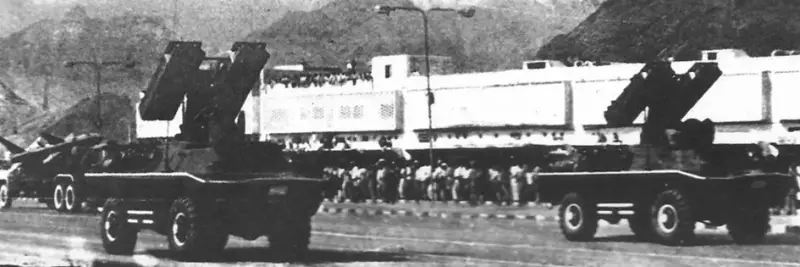
Strela-1 air defense system at a parade in Aden in the early 1980s
In terms of firing range, the Strela-1 self-propelled system did not exceed MANPADS, and the photocontrast homing head did not provide a high probability of hitting air targets.
Judging by the available Internet materials, in early-mid 2015 the Kvadrat air defense system was used several times in air attacks, but there is no reliable information about the results of its combat work.
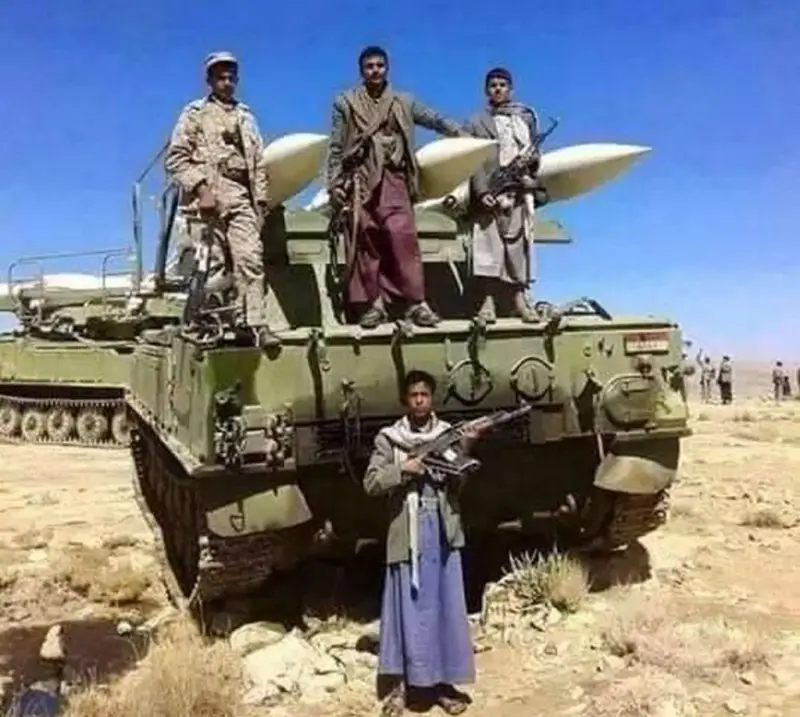
The Kvadrat and Strela-1 air defense systems that fell into the hands of the Houthis are now most likely destroyed or inoperative. The footage available on the Internet with Yemeni complexes of this type on a basic chassis dates back to 2018.
Also, as part of military-technical cooperation with the USSR, about 350 portable Strela-2M systems were transferred to South Yemen. It can be said with a high degree of confidence that the bulk of these Soviet-made MANPADS cannot now be used due to the lack of batteries and failure.
According to unconfirmed reports, Ansar Allah units received Soviet Igla-1 MANPADS, Chinese QW-1M, Iranian Misagh-2 and even American FIM-92 Stinger, but photographs of these portable systems in the hands of the Houthis could not be found.
In addition to air defense systems and MANPADS, the Yemeni armed forces had about 500 ZSU and towed anti-aircraft guns. The anti-aircraft artillery arsenal was quite varied and varied in caliber: about 40 ZSU-23-4 Shilka, about the same number of 20-mm M167 Vulcan on the BTR-152 chassis and various off-road vehicles, about 150 towed 23-mm ZU-23, three a dozen 35-mm twin GDF-002 machine guns, approximately 200 units of 57-mm AZP-57 and 37-mm 61-K guns.
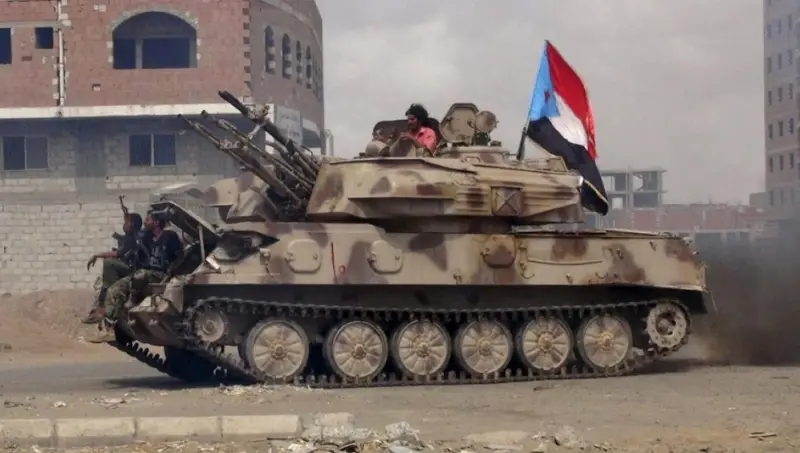
The reference books also indicate the presence of approximately fifty 100-mm KS-19 and 85-mm KS-12 anti-aircraft guns. But even if this is so, it is unlikely that 85-mm and 100-mm guns can be considered effective in modern conditions and, most likely, they were used to fire at ground targets.
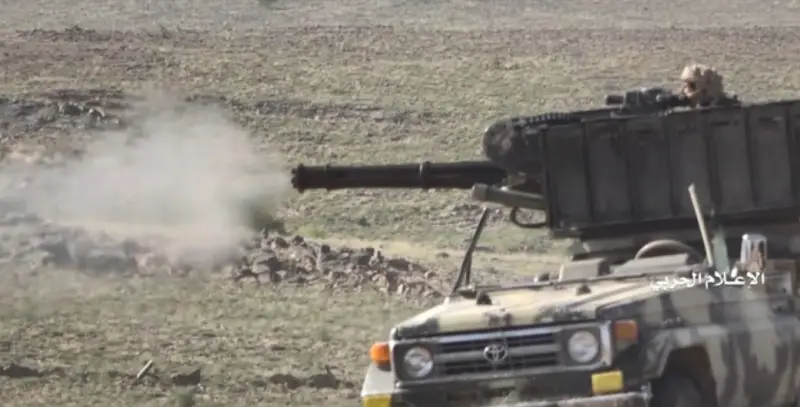
However, small-caliber anti-aircraft installations fired at manpower and equipment much more often than at enemy aircraft, helicopters and drones.
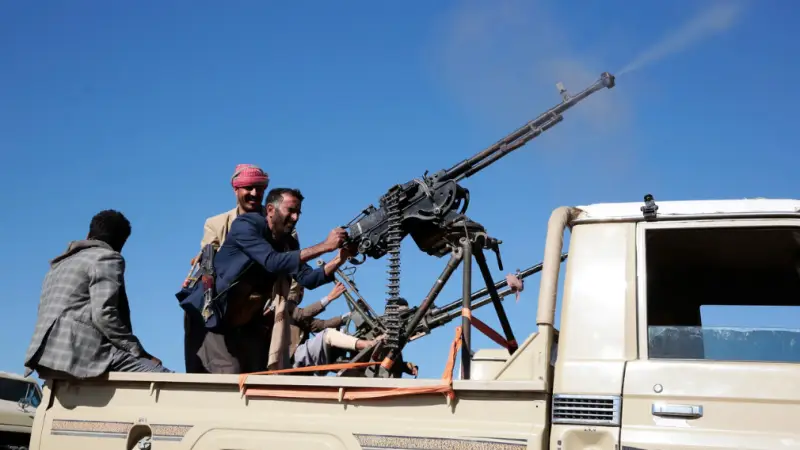
In 2015, the Houthis had at their disposal more than a thousand 12,7-mm and 14,5-mm anti-aircraft machine gun mounts of Soviet, American and Chinese production, a significant part of which were installed on various vehicles.
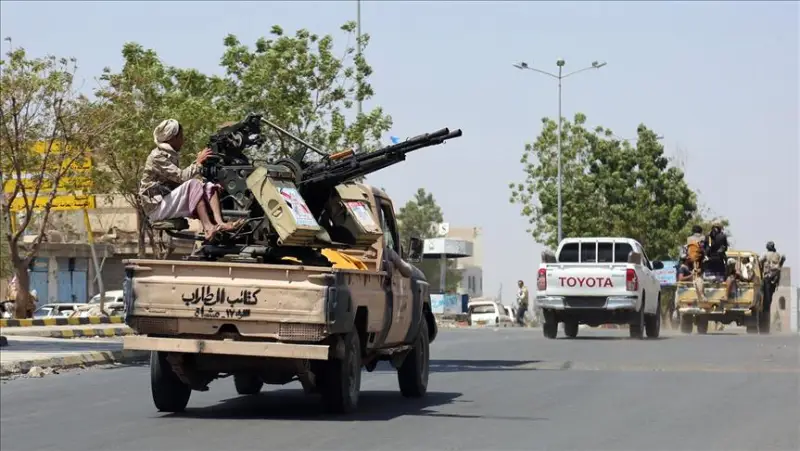
In 2014, 16 radar posts operated in Yemen, monitoring the airspace, guiding fighters and providing target designation to ground-based air defense systems, as well as supporting civil flights.
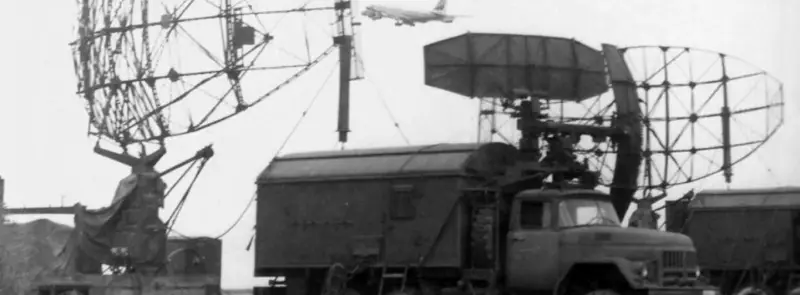
For this purpose, American-made stationary stations AN/FPS-66 with an instrumental range of about 400 km, operating in the decimeter frequency range, were used. Soviet decimeter-range radars P-37 (detection range of large high-altitude targets up to 350 km), meter-range radars P-18 (detection range of high-altitude targets up to 250 km), as well as decimeter low-altitude radars P-19 (detection range of a target flying at altitude 6 km – up to 160 km). PRV-37 altimeters worked in tandem with P-13 two-coordinate radars, providing coordinate determination at a distance of up to 310 km.
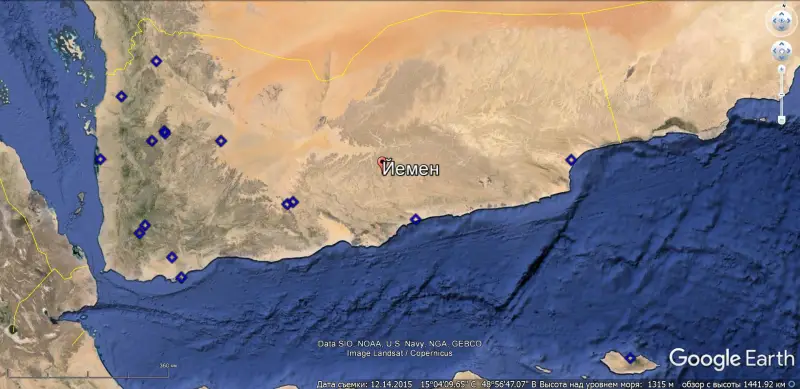
Layout of radar posts in Yemen as of 2014
During the air operation Decisive Storm, carried out by Arab coalition aircraft, most of Yemen's radars and anti-aircraft missile systems were subjected to missile and bomb attacks, and they did not have a noticeable impact on the course of hostilities.
Due to their high mobility and large numbers, MANPADS, small-caliber anti-aircraft guns and anti-aircraft machine gun mounts posed a great threat to Arab coalition aviation. By the end of 2015, they had destroyed one Moroccan F-16C, one Bahraini F-16C, two Saudi AH-64As and up to a dozen drones.
Продолжение следует ...
Information